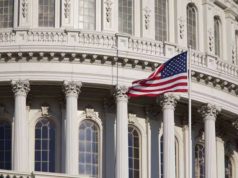
Introduction
One of the defining features of the United States Constitution is the division of power between the federal government and the state governments. This division of power is enshrined in the Tenth Amendment, which states that all powers not delegated to the federal government by the Constitution, nor prohibited by it to the states, are reserved to the states or to the people. However, the balance of power between the federal government and the states has been a contentious issue throughout American history. In this article, we will explore the concept of federal versus state power, its historical context, and its impact on American society.
Constitutional Foundation
The division of power between the federal government and the state governments was established in the US Constitution. The Constitution grants certain powers to the federal government, while reserving all other powers to the states. These powers are enumerated in the Constitution’s text. For example, Article I, Section 8 grants Congress the power to tax, regulate commerce, declare war, and provide for the general
welfare. Meanwhile, the
Tenth Amendment grants the states all powers not delegated to the federal government, including the power to regulate commerce within their own borders, establish their own court systems, and regulate public health and safety.
Historical Context
The division of power between the federal government and the states has been a contentious issue throughout American history, with conflicts arising over issues such as civil rights, taxation, and economic regulation. One of the first major controversies over federal versus state power occurred during the Civil War. The Southern states believed that they had the power to secede from the Union and form their own government. However, President Lincoln and many others argued that the Constitution did not allow for secession and that the federal government had the power to preserve the Union.
Another major controversy over federal versus state power occurred during the Civil Rights Movement. In the 1950s and 1960s, Southern states resisted desegregation efforts, arguing that the Tenth Amendment gave them the power to regulate their own schools and other public institutions. The federal government, led by President Lyndon B. Johnson, argued that the Constitution’s guarantees of equal protection and due process required the federal government to intervene to protect the rights of African Americans.
Impact on American Society
The balance of power between the federal government and the states has had a significant impact on American society, affecting everything from civil rights to healthcare to taxes. One example of the impact of the federal versus state power debate is the Affordable Care Act. The ACA, also known as Obamacare, was enacted in 2010 with the goal of providing affordable health insurance to all Americans. However, some states, particularly those with conservative leadership, have resisted the law, arguing that the federal government does not have the power to mandate the purchase of health insurance or regulate the healthcare industry.
Another example of the impact of the federal versus state power debate is the legalization of marijuana. While marijuana remains illegal under federal law, many states have legalized the drug for medical or recreational use. This has created a conflict between federal and state law, as the federal government has continued to prosecute marijuana-related crimes even in states where the drug is legal.
Pros and Cons
There are both advantages and disadvantages to a system of shared power between the federal government and the states. One advantage is that it allows for a greater degree of local control over government policy. States have unique needs and priorities, and allowing them to regulate themselves can lead to more effective and efficient policy outcomes.
Another advantage is that it allows for experimentation and innovation in policy. States can try out new approaches to public policy that may not be feasible at the federal level, and if successful, these policies can be adopted by other states or even at the federal level.
However, there are also disadvantages to a system of shared power. One disadvantage is that it can lead to a lack of consistency in policy across the country. If each state has its own policies on issues like healthcare or the environment, it can be difficult to develop a coordinated national approach.
Another disadvantage is that it can create a lack of accountability and transparency. If each state is responsible for regulating itself, there may be less transparency and accountability in government policy at the state level, with less oversight from the federal government and fewer opportunities for citizen engagement.
Conclusion
The division of power between the federal government and the states is a complex issue that has been debated throughout American history. While there are advantages to a system of shared power, such as local control and innovation, there are also disadvantages, such as lack of consistency and less accountability. As the United States continues to grapple with the balance of power between the federal government and the states, it is important to consider both the historical context and the impact of this debate on American society.
Throughout American history and with the inception of the United States Constitution, there has been an ongoing debate about the struggle between Federal and State power. The United States Constitution was provided a structure by which the United States Government operates, while establishing a connection between the Federal Government and the states.
The U.S. Constitution had the purpose of filling in the gaps of all unenumerated powers of the states in order to build a Federal framework of government. In the late 18th Century, when the U.S. Constitution was still being proposed and developed, its proponents, James Madison and Alexander Hamilton, maintained to critics that the Constitution had no intention of overpowering or infringing upon the power of State governments.
Even so, other writers of the Constitution did indeed have the intention of expanding the power of a Federal Government and felt that it was necessary. Today, it is not uncommon for disputes between Federal and State laws to take place within Federal court and State
supreme court.
Commerce Clause
The Commerce Clause is an enumerated power in Article I, Section 8, Clause 3 of the United States Constitution states that Congress has the power “To regulate commerce with foreign nations, and among the several States, and with the Indian Tribes”. The Commerce Clause has extended its reach to Foreign affairs, Interstate Commerce, and Indian Commerce and has been shown by interpreters as being an attempt to make the
The United States a free trade zone.
The dispute still exists today about the range of powers that the Commerce Clause grants to Congress. According to interpreters, James Madison wrote the Commerce Clause to empower the new Federal Government to only stop certain states from taxing foreign goods, while another State did not tax such goods, in addition to preventing the taxation of goods between the states within the U.S. It has proven to be a central piece in the debate of Federal versus State power.
In the case of Cherokee Nation v. Georgia, which was held in Federal court, was a case that argued the rights of the Cherokee Indian tribe living within the State of Georgia
independently. The Cherokees accused the State of Georgia of enacting a series of laws which stripped them of their rights in an effort to drive the tribe out of the State.
The U.S. Supreme Court rejected the arguments of the Cherokees, stating that as independent sovereignty, A federal court had no jurisdiction over the tribe and the laws enacted by Georgia remained.
This showed, through the Federal court, that Indian tribes within the United States were considered to be foreign nations, as mentioned in the Commerce Clause. Another case, United States v. Lopez, attempted to spread the reach of the Commerce Clause to a criminal statute, which prohibits the possession of guns near schools. Alfonso Lopez, a twelfth-grade student, was accused of possessing a gun in an Antonio, Texas high school. Congress was accused of extending the power it had using the Commerce Clause to regulate local economic activity in ways that the States had no power to do.
After he was convicted, he appealed to the Fifth Circuit Court of Appeals, claiming that Congress did not have the power to legislate using the Commerce Clause. The Court agreed and reversed his conviction. This decision once again limited the powers of
Congress under the Commerce Clause.
Further Criticisms of the U.S. Supreme Court
According to the constitutional scholar, Kevin Gutzman, the Court has misused the Fourteenth Amendment to help limit the power of states and State supreme court power. Justice Brandeis believed that states and State supreme courts should be able to operate without direct interference from Federal court and states should operate as “laboratories of democracy”.



















